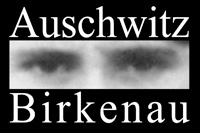




Mengele, Josef
(1911-1979)
Physician, doctor of philosophy and medicine. In 1937 he became an assistant at the Institute of Hereditary Biology and Racial Hygiene at Frankfurt University and began his research on twins. He was accepted into the NSDAP and the SS a year later. He was employed among others in the Main Office for Race and Settlement in Poznań, where his task was to assess the suitability of resettled people for Germanization. Severely wounded on the front, he was classified as unfit for front‑line service. Desirous of continuing his scholarly research, he requested a transfer to one of the concentration camps.
From the spring of 1943, he carried out in Auschwitz the anthropological research on various racial groups, mostly Roma, as well as research on multiple pregnancy, and on the physiology and pathology of dwarfism. He also studied persons with hereditary physical anomalies. He chose people for a wide range of medical tests. Some of them went on to be photographed, finger‑and toe‑printed, and to have plaster casts taken of their jaws and teeth. Afterward, some of them were killed by phenol injection (the needle) so that they could be autopsied and their organs used for comparative analysis. Mengele also continued his pre-war racial and genetic research on Jewish and Roma twins as well as people with visible genetic defects. These prisoners, many of them children, were subjected to painful experiments without anesthesia and frequently killed so that they could be autopsied. At the same time, Mengele conducted selection on the ramp and among prisoners in the camp hospitals.
After the war, like many SS men and war criminals, he escaped to South America, where he hid until his death in 1979.
